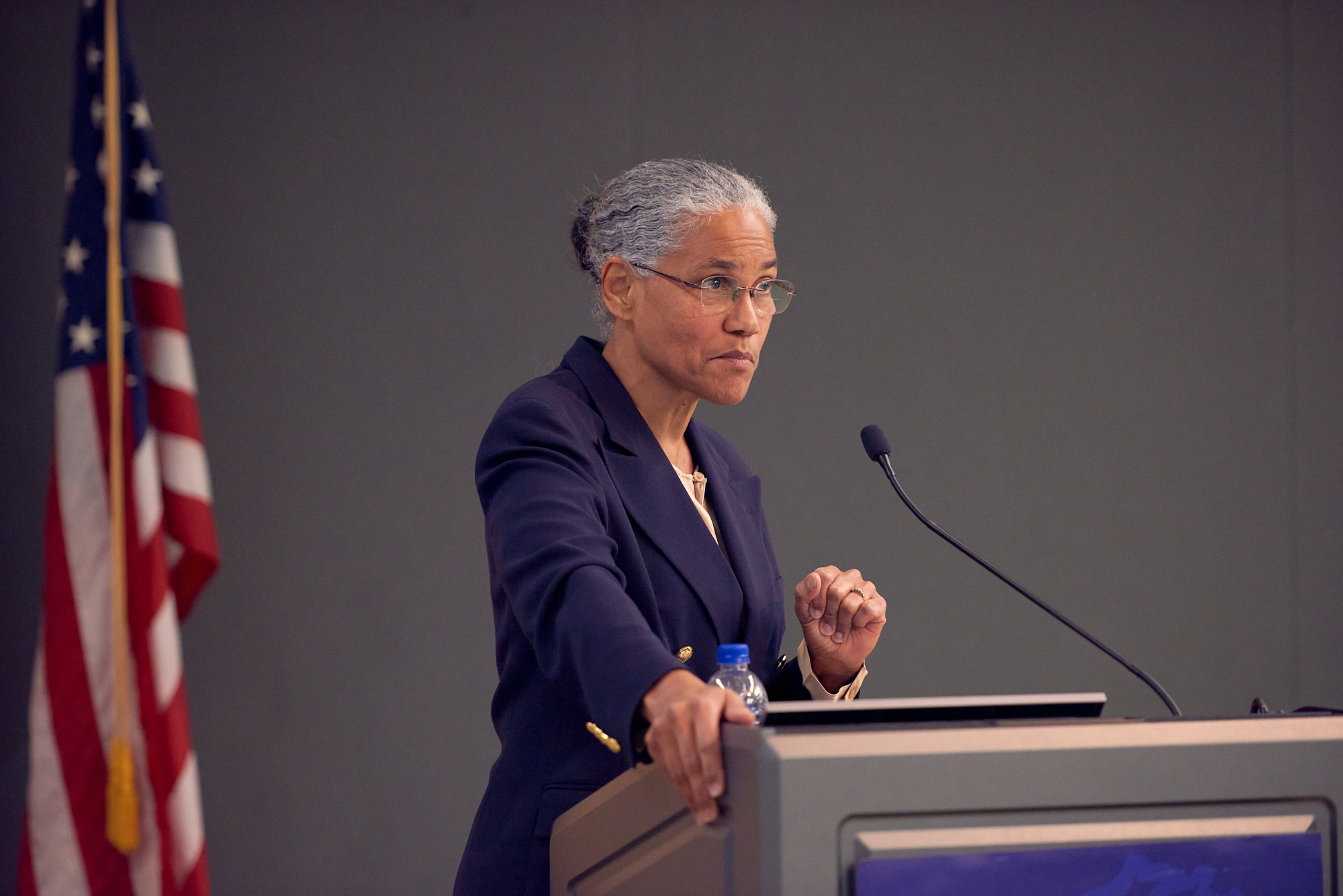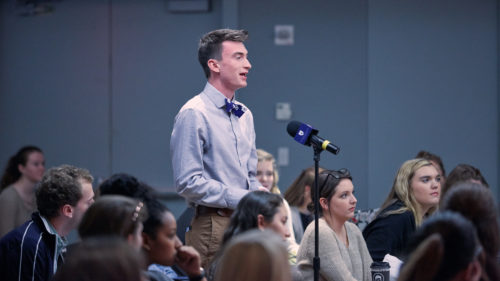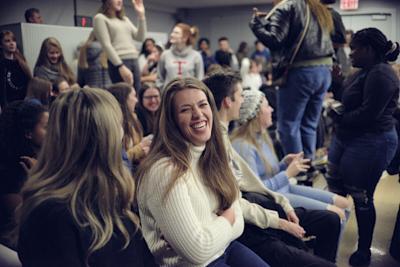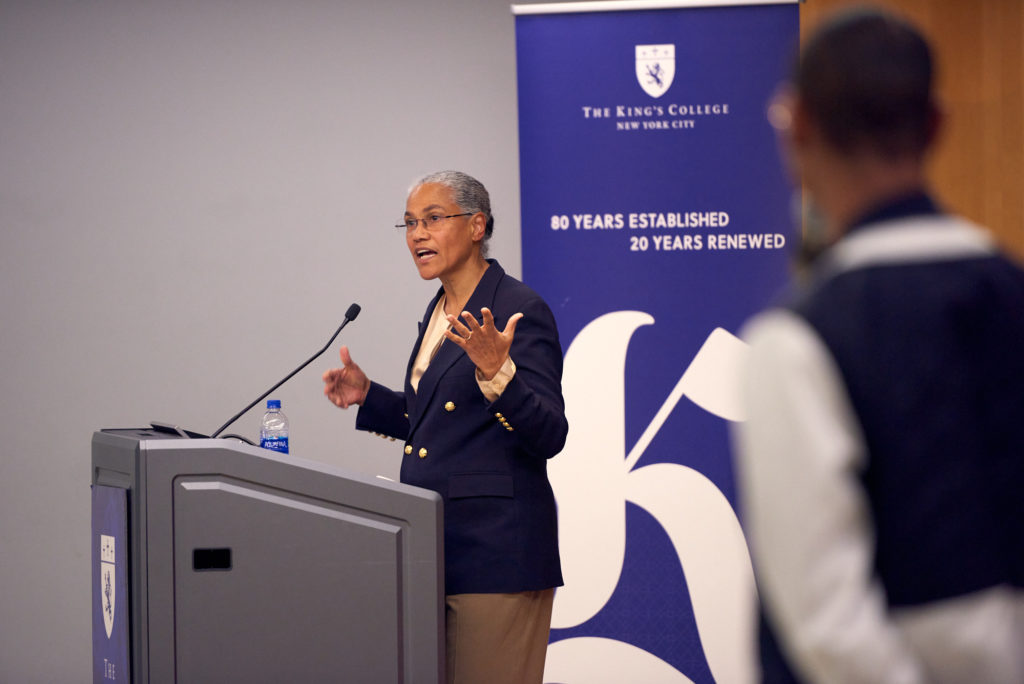The History of The Black Church – A Black History Month Lecture from Dr. Jacqueline Rivers
Dr. Jacqueline C. Rivers presented her Black History Month Address on the history of the Black church in America.

On February 13, Dr. Jacqueline C. Rivers presented her Black History Month Address on the history of the Black church in America. Rivers was welcomed by President Tim Gibson as the address was part of the ongoing President’s Lecture Series.
Dr. Rivers is a lecturer at Harvard University and executive director of the Seymour Institute on Black Church and Policy Studies. Rivers holds a Ph.D. from Harvard University where she was a Doctoral Fellow in the Multidisciplinary Program in Inequality and Social Policy of the J. F. Kennedy School of Government and a Graduate Research Fellow of the National Science Foundation.
WATCH: Dr. Jacqueline Rivers’s address about the history of the Black church
President Gibson introduced Rivers and offered a few opening remarks, explaining that Dr. Rivers and her husband, Rev. Eugene Rivers, have been helping support the potential launch of the Center for Christianity and The Black Experience at The King’s College.
Rivers opened her address by reading Galatians 3:28: “There is neither Jew nor Gentile, neither slave nor free, nor is there male and female, for you are all one in Christ Jesus.” Rivers then said, “When I come home to Jamaica and I talk about the Black church, they’re [her family] like ‘Black church? What about this passage in Galatians? How could there be a Black church and a white church, aren’t we all one in Jesus? Doesn’t he get rid of all these racial differences?’”
Rivers then said to the audience, “You might be asking yourself the same question. Or maybe you don’t even know that there’s a Black church—that there are seven historically Black denominations.” Rivers continued, “But what I want to do today is to take a walk through history, to look at how the Black church came into being, and why it continues to exist.”
Rivers started her walk through history in the period of the Great Awakening in early eighteenth century America. Methodist and Baptist Christians were reaching out to enslaved people, according to Rivers. Prior to this, most slaves had resisted the idea of Christianity. But this kind of Christianity spoke to them—this “idea of a Jesus who was a liberator.” During this period, “Slaves were accepted into full fellowship in Methodist and Baptist churches. And Black people, both slave and free, were allowed to teach and preach.” Many of these Christians also opposed the institution of slavery. Men like John Wesley, the founder of the Methodist church, would not even allow slaveholders to be members of the church.
More than sixty years later, after the Revolutionary War, former slaves were flooding into Philadelphia and expected to be met with open arms. Instead, they were met “with rising hostility… the very Methodists and Baptists who had been so instrumental in the Great Awakening now won’t even minister to these freed people.”
Rivers detailed one example of this larger trend: when the Black preacher Richard Allen and other Black members of St. George’s Methodist church in Philadelphia refused to sit in the church’s newly-installed segregated seating, they were forcibly dragged from the pews where they were praying. Allen went on to found the first independent Black denomination in America, the African Methodist Episcopal Church (AME).
“The roots of the Black church lie in the contradictions and hypocrisy of the white church,” Rivers concluded. “AME is only the first of many Black churches which exist in many cases as a result of racism from whites.”
“But that was a really long time ago. That was over 200 years ago… Why are Black and whites still not worshipping in integrated churches today?” asked Rivers. She looked next to 1964 and the civil rights movement.
Where the church should have been leading the charge towards racial equality, Rivers said that instead most ministers were silent or even outright opposed to the cause of integration. In Birmingham, “Eight white pastors issued a public statement calling for an end to non-violent protests. Not calling for an end to segregation. Not calling for an end to people being attacked by police dogs. Calling for an end to non-violent protest.”
Martin Luther King Jr., was likewise disappointed in his fellow ministers in Christ. In his “Letter from Birmingham Jail,” King wrote, “I have longed to hear white ministers declare: ‘Follow this decree because integration is morally right and because the Negro is your brother.’” But this declaration never came.
Rivers’s talk concluded with a view of the present day. In 2010, one in three Blacks living in metropolitan areas experienced hyper-segregation, according to Rivers. “Black students are less likely to get exposed to advanced classes in high school than are whites. They are less likely to complete high school. They have much lower rates of educational attainment. Only 14% earn a BA compared to 31% of whites, even though they enroll in college at similar rates.” Studies show it is primarily financial problems which cause Black students to drop-out of college, which is evidence for structural problems of wealth affecting educational opportunities, said Rivers. “Black unemployment rates are at all-time lows [in America]. But did you know that they are almost twice the rates of white people? Did you know that that is a situation that has endured for over 50 years?”
Rivers continued, “Blacks earned 68% of what their white peers earned. The poorest Blacks only 54% of their white peers. According to one study, it would take 228 years for the average Black family to accumulate as much wealth as the average white family has right now.”
Rivers cited statistics that state 62% of white evangelicals attribute these unequal outcomes to a “lack of motivation.” Yet that interpretation ignores the structural differences that impact Black and white people in vastly different different ways. Overall, white people have access to higher quality schools. Black people are more likely to experience poverty, low educational attainment, and inferior neighborhoods. Rivers introduced a parable about two friends who join a weight loss program, but the white friend is sent to an isolated cabin in the woods with lots of greasy food and no exercise equipment. The black friend is surrounded by great food, equipment, and encouraging peers and is shocked to find out later that his white friend hasn’t been making any progress losing weight.
Rivers argued, “White Christians are as ignorant of what goes on in the lives of Black people and the obstacles they face as the Black guy was of what was happening to his white friend.”
“So what are we to do? Back to my family and the contradiction of the church divided by race. Surely Jesus calls us to reconciliation. But it can’t merely be about interpersonal relations… It’s not about a conversation. It’s about understanding the issues that we face and really engaging those issues. Working to change the circumstances.”
The first step, according to Rivers, is that “we learn about racial inequalities in the U.S to understand the structural nature of the problem.” The second step is, “if you’re a Christian, to think prayerfully. If not a Christian, to think! About how these inequities can be transformed. Not just by treating individuals with kindness, respect, and Christian love, but by taking steps to make sure Black people get to go to the same kind of weight loss facilities as white people. That Black people get the same kinds of schools, neighborhoods, and jobs that whites enjoy.”
Rivers closed with Matthew 25:40: “Whatever you do to the least of these my brothers, you do to me.” She said, “Whatever we do to the most disadvantaged people, we do to Jesus. If we ignore the heavy burdens that society lays on the shoulders of Black people, we ignore the burdens on Jesus.”
In the question and answer, Isuraoluwa Adedokun (PPE ’20) observed that she wished more of her white classmates had been present for the lecture. She said, “I think this is a message that should be heard by faculty and current students, who aspire to ‘influence strategic institutions.’” If you missed the talk, watch the video recording here.






